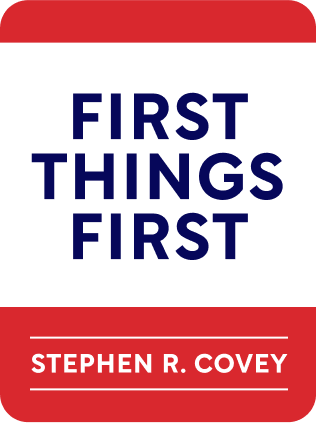

This article is an excerpt from the Shortform book guide to "First Things First" by Stephen R. Covey. Shortform has the world's best summaries and analyses of books you should be reading.
Like this article? Sign up for a free trial here .
What are the four quadrants of time management? What quadrant is the most important?
There are four time management quadrants. Quadrant I is both urgent and important. Quadrant II is important, but not urgent. Quadrant III is urgent, but not important. And Quadrant IV is neither urgent nor important. According to Stephen Covey, you should focus most of your time in Quadrant II—where you do activities that are important, but not urgent.
Keep reading to learn about Stephen Covey’s time management quadrants, and why you should shift your focus to Quadrant II.
The 4 Time Management Quadrants
There are two factors that determine how you spend your time: importance and urgency. A task can be either important, urgent, both, or neither.
The “first things” method of time management emphasizes important tasks, rather than those that are merely urgent. All our daily, weekly, and monthly activities fall into one of the four time management quadrants, as seen below:
| Urgent | Not Urgent | |
| Important | Quadrant I Urgent and Important | Quadrant II Not Urgent, but Important |
| Not Important | Quadrant III Urgent, but Not Important | Quadrant IV Neither Urgent nor Important |
Quadrant I is both urgent and important. This quadrant contains emergencies and problems that require your immediate attention. This can include health emergencies, a work deadline, or a broken-down car.
Quadrant II is important, but not urgent. This is where you do prevention, maintenance, long-term planning, relationship building, and personal leadership activities like evaluating your thought patterns and assessing progress toward goals. For the highest quality of life, Quadrant II is where you should spend most of your time.
Quadrant III is urgent, but not important. The urgency of Quadrant III activities can make them appear important, but they don’t actually align with your values or contribute to the achievement of your goals. Quadrant-III activities include making phone calls, going to meetings that lack purpose, and receiving unexpected guests.
Quadrant IV is neither urgent nor important. These activities add no value to your life; even recreational activities don’t belong here because true recreation is a restorative and valuable Quadrant-II activity. Quadrant IV includes gossiping, mindlessly watching television, or passively scrolling through social media.
Quadrant-III and Quadrant-IV activities add little value to your life. You should limit time spent in these quadrants. Although Quadrant-I activities are inevitable, you should aim to spend most of your time in Quadrant II.
Applying the 4 Quadrants to Real Life
Stephen Covey’s time management matrix is meant to be a flexible system; it takes into account that real life doesn’t always fit neatly into one of four quadrants. Here are some tips to help you apply it to your life:
1. Prioritize activities within Quadrant I: Facing multiple Quadrant I tasks that are all urgent and important can be overwhelming and push you back toward an efficiency paradigm. So how do you decide which Quadrant I task to tackle first? Divide Quadrant I into a Quadrant 1A and 1B to determine which tasks are most urgent.
2. Determine why you’re in Quadrant I: It’s not bad to be in Quadrant I; in fact, it’s inevitable. But it’s important that you’re aware of why you’re in Quadrant I. If you’re there because you’re focused more on the urgency of Quadrant-I activities rather than on their importance, then when you work through all the Quadrant-I matters, a lack of focus on importance will lead you to Quadrant III, matters that are urgent but not important. On the other hand, if you’re there because of a focus on importance, then when you get through all the urgent activities you’ll move on to Quadrant II, matters that are important but not urgent. You want to spend most of your time in Quadrant II, not III.
3. Create time for Quadrant II: This can be difficult, especially if you’re in a cycle of urgency. The first place you can start spending less time is Quadrant III; recognize when urgent tasks are not important, and stop wasting your time on them. As you do this more, you’ll gain enough time to put more energy into Quadrant II, which will naturally reduce your Quadrant I tasks.
4. Focus on Quadrant II, especially if you work in a Quadrant-I environment: Some people have jobs that inherently involve a lot of time in Quadrant I, including firefighters, doctors, police officers, and news reporters. Paradoxically, these people especially need to make an effort to attend to Quadrant II, which reduces and eliminates some Quadrant I tasks while preventing you from getting completely worn out from dealing with urgent problems and crises.

———End of Preview———
Like what you just read? Read the rest of the world's best book summary and analysis of Stephen R. Covey's "First Things First" at Shortform .
Here's what you'll find in our full First Things First summary :
- How to work effectively, not just efficiently
- Why you need to think more about what you're spending time on than how much time you're spending
- The 6 steps to effectively schedule and prioritize important activities






